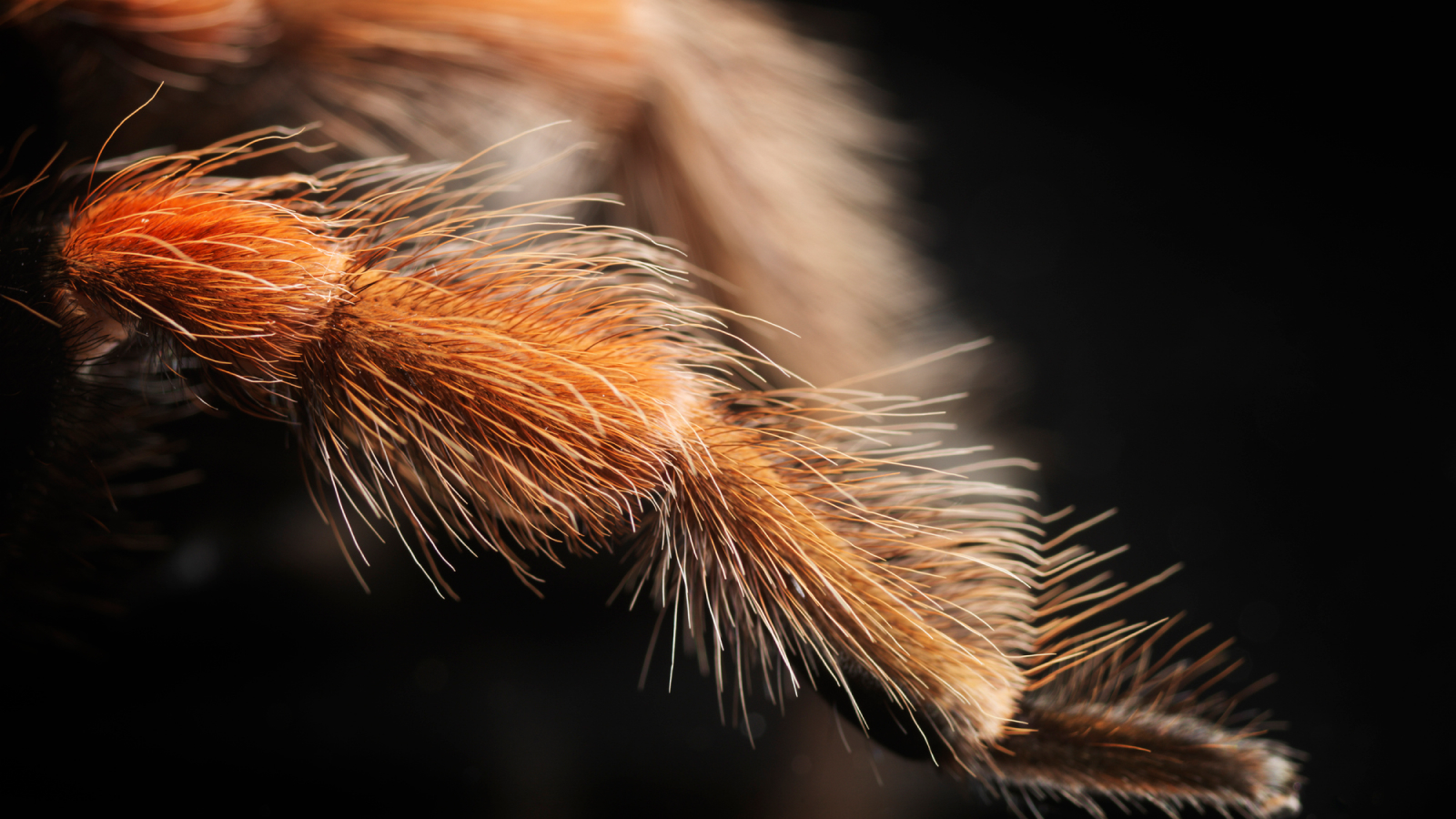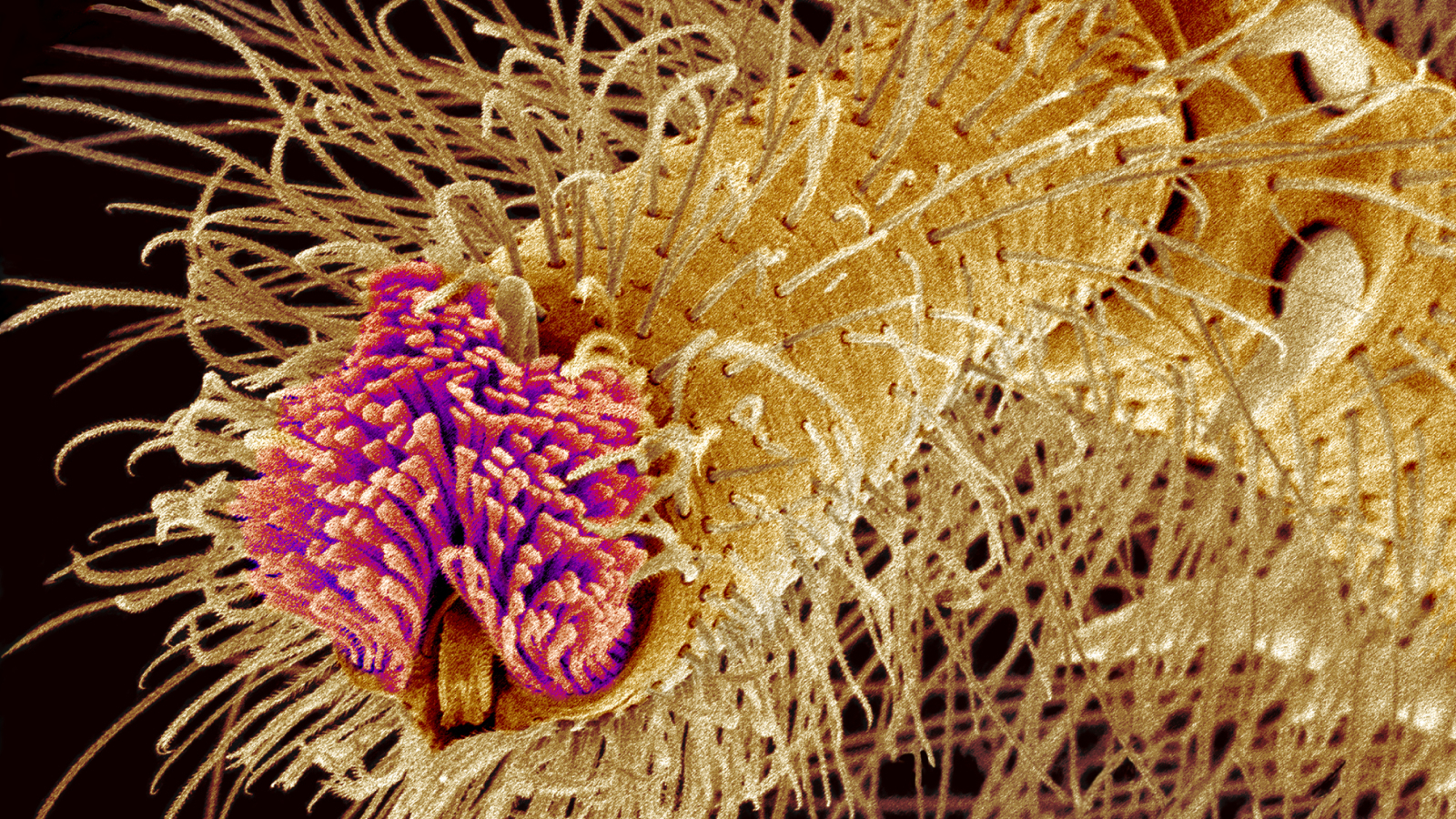Why are tarantulas so hairy?
Tarantulas use their "hair" for all kinds of things, including smelling and tasting.

Tarantulas are hair-covered beasties. But most spiders don't have such "furry" bodies. So why do tarantulas look so hairy?
These hairs are more important than you might think.
"Unlike the very limited functions of human hairs, hairs on tarantulas (and other spiders) can do so very many different things," Jerome Rovner, former associate editor of the Journal of Arachnology by the American Arachnological Society, told Live Science in an email.
Sensing the world
Tarantulas are hairy for several reasons. Unlike mammal hair, which is made of keratin, tarantulas' hairs, called setae, are made of chitin, a derivative of glucose that also makes up the structure of a spider's exoskeleton.
Some of these hairs act as sensory organs, helping tarantulas smell, taste, touch and detect vibrations from the world around them. These sensory hairs are found mainly on the spiders' legs and mouthparts and feed into sensory nerves located in the spider's "skin" or cuticle..
The most sensitive hairs, called trichobothria, detect even the smallest changes in air movement because of their "ball and socket" attachment to the membrane in the cuticle. These hairs help guide tarantulas in capturing or responding to escaping prey. In 1883, German zoologist Friedrich Dahl named these "hearing hairs" when he observed that they moved to the sound of a violin.
The chemically sensitive hairs used for smell and taste are blunt and hollow. They also play a role in reproduction and help the tarantula look for a mate. "Male tarantulas wander in search of a female's burrow. If they walk near such a burrow, their contact chemosensitive hairs are stimulated by the sex pheromone that is bound to silk lines near the burrow's entrance, thereby enabling the male to find the female," Rovner explained, adding that these hairs could possibly detect chemicals left by nearby prey.
Get the world’s most fascinating discoveries delivered straight to your inbox.
Related: Why do spiders have 8 legs?
Tarantula hairs serve three other functions. First, they help tarantulas, which are cold-blooded, regulate their body temperature.
"The hairs trap a layer of air against their body and appendage cuticle, creating a kind of insulation," Rovner said. "With a thick coat of hair, tarantulas can remain active throughout cool nights in tropical rainforests and deserts."
The long hair also serves as a sort of waterproof coat that can "repel water if the tarantula is submerged by flooding," Rovner said.
Finally, the undersurface of their leg hairs are "sticky." This helps tarantulas climb smooth vertical surfaces. These dense networks of bristles are called scopulae and also help with capturing prey.
Many tarantulas in the Western Hemisphere also have up to 1 million deadly sharp hairs on their abdomen that they use for defense. These barbed, or urticating hairs t "can embed in the skin, eyes, and mucosal membranes of predators, causing irritation," Rovner said.
When threatened, tarantulas use their hind legs and rub against their abdomen to detach these urticating hairs, creating a mist of stinging spines that penetrate the predator so they can escape.
When people are hit by urticating hairs, they can cause redness, stinging and itching —and even blindness if they strike the eyes.
Tarantulas native to the Eastern Hemisphere, by contrast, do not have urticating setae. Instead they have more potent venom and use an aggressive stance to warn predators before they bite.

Elise studied marine biology at the University of Portsmouth in the U.K. She has worked as a freelance journalist focusing on the aquatic realm.
- Tia GhoseEditor-in-Chief (Premium)
- Laura GeggelManaging Editor




